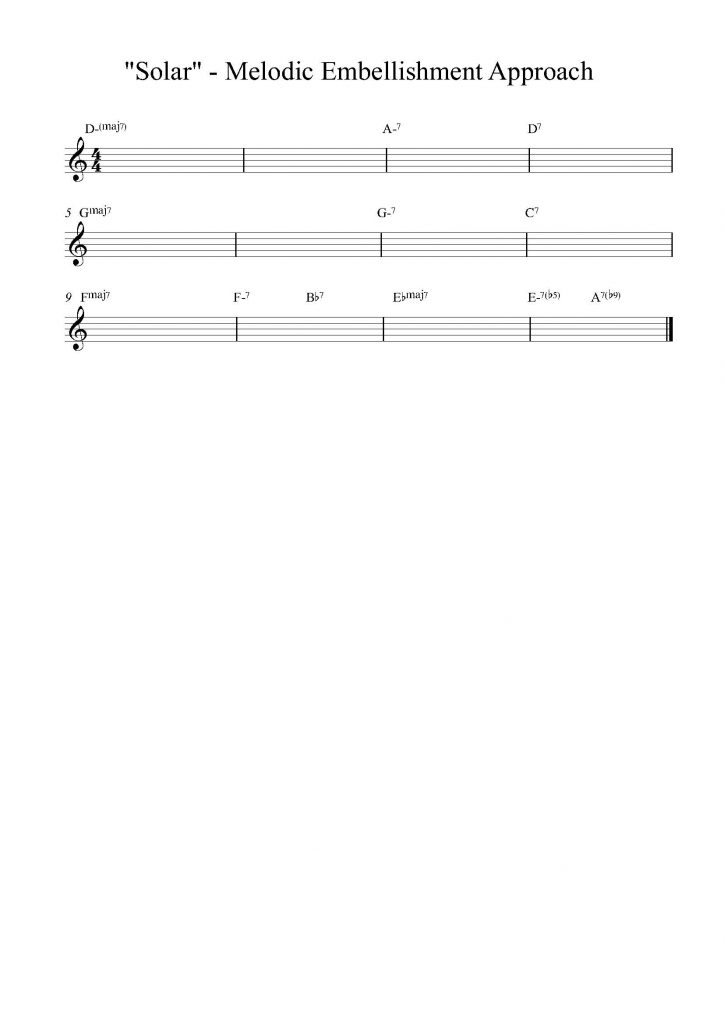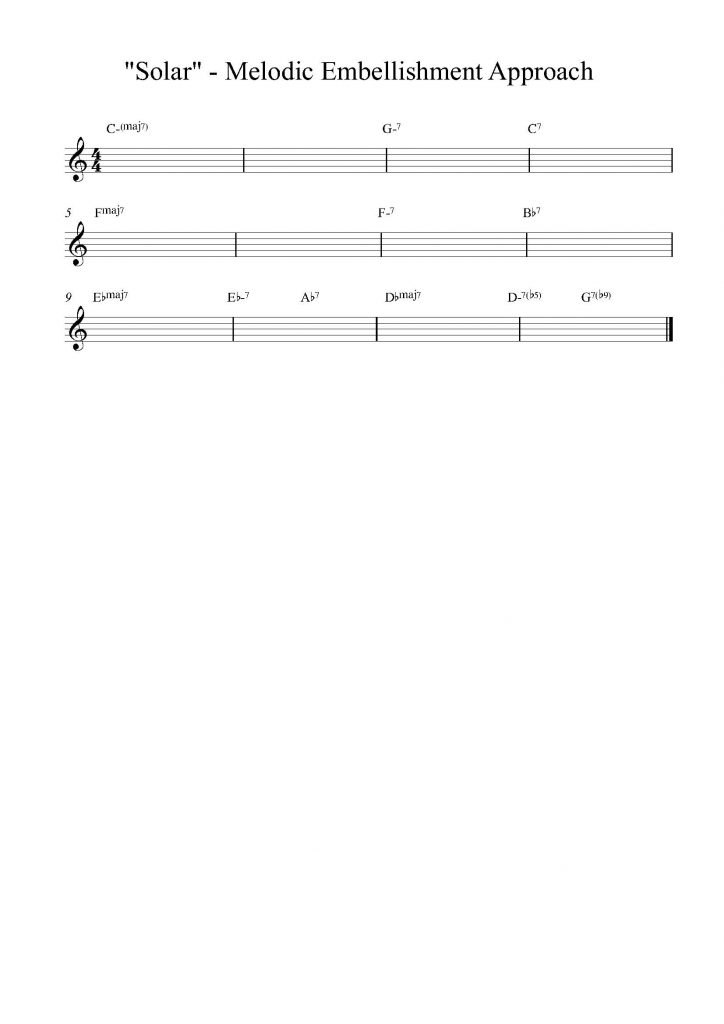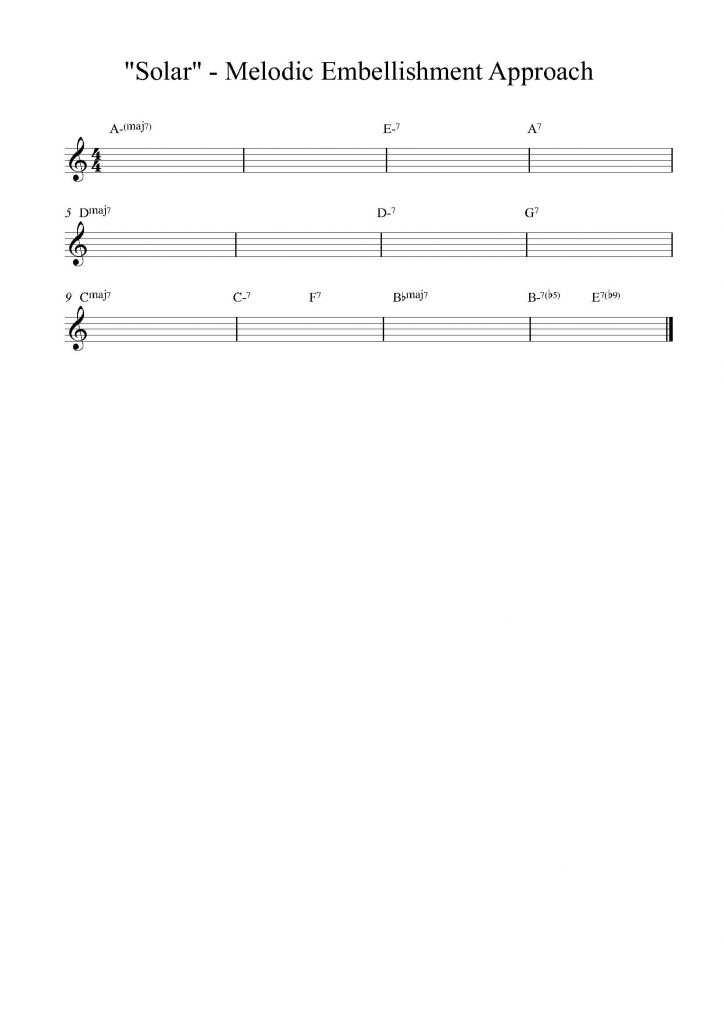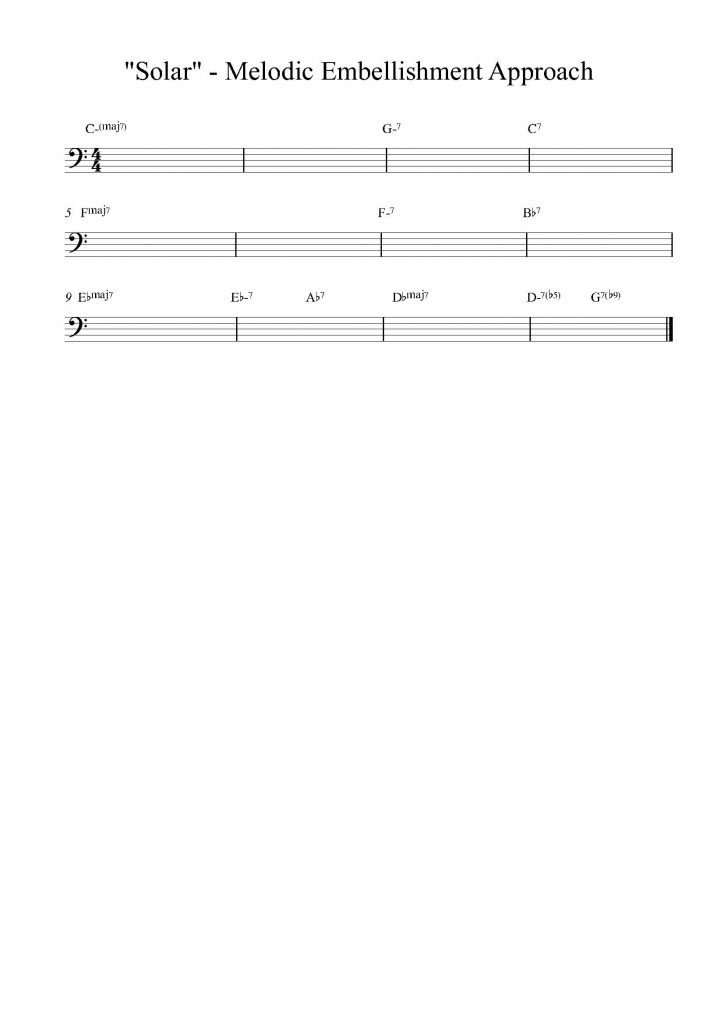Variations on the 12-bar blues form are numerous. Whether it is expanding to 16 or more measures, reworking the changes to add more complex chordal motion, or varying the meter – the blues can be altered to fit a variety of style choices and musical preferences. Though not a “minor blues” by the strictest definitions, exploring the sequence of chords to “Solar” offers some engaging concepts to explore that expand beyond the basic 12-bar formula and to start to develop more experiences with ii-V progressions and the application of harmonic minor scales.
Each module contains:
- A set of concepts and approaches
- Suggested ways to practice and apply new ideas
- Creative ways to broaden the application of concepts
- Goals and projects to demonstrate developing vocabulary and concepts
Solar Chord Progression

Download or Print Solar – Chord Progression – Bb instruments

Download or Print Solar – Chord Progression – C instruments

Download or Print Solar – Chord Progression – Eb instruments

Download or Print Solar – Chord Progression – Bass Clef instruments
*Refer to the following Spotify Playlist – Solar for many examples.
Remember, listening is just as important as practicing.
Try playing through the chords according to the steps below by yourself (a cappella) with a metronome. Once you are comfortable playing through the form in time, then try it with the Solar play-a-long track.
Refer to the playing examples of every variation below.
Bass Only
Drums Only
Bass and Drums
Piano and Drums
Full Rhythm
Play triads: 1,3,5 in time through the progression
- Walk a bass line with triads connecting the root by 1/2 step below
- Walk a bass line with triads connecting the root by 1/2 step above
- Walk a bass line with triads connecting the root by 1/2 step below or above
- Play triads in other inversions: 5,1,3 etc… (try a few combinations)
- Improvise with triads only
- Improvise with triads and connect by half step to 1,3 or 5
- Play 7th chords: 1,3,5,7
- Play 7th chord inversions: Your choice – there are 24 combinations
- Guide tones: Map out the 3rd’s and 7’s (Just like you did with the blues)
- Incorporate the scales into improvisation. Remember, the chord tones are still your best note choices. Try filling in the chord tones with some of the scale notes.
- Improvise using the harmonic generalization scales (keys above brackets)
Most jazz songs are comprised of patterns called ii – V – I in which all three chords come from the same key center. For example: In “Solar”, measure 3-5 are all in the key of F Major. Gmi7 is the ii, C7 is the V and FMaj7 is the I. Therefore, you can harmonically generalize and use the F Major scale over all of those measures when improvising. In the last measure of “Solar”, it’s the same relationship but it resolves to a minor chord and is preceded by Dmin7b5 and G7(b9). The scale we use for that relationship is harmonic minor, which is b3, b6, natural 7. The last measure of “Solar” would be spelled C, D, Eb, F, G, Ab, B, C (in concert key).

